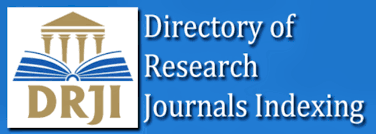Rate and reasons for discarding blood and blood product units at the Northern Zone Blood Transfusion Centre in Tanzania
DOI:
https://doi.org/10.30574/gscarr.2021.8.3.0191Keywords:
Blood, Blood products, Blood transfusion, Blood discard rateAbstract
Blood transfusion is an essential component in modern healthcare. Blood being an irreplaceable resource needs to be appropriately utilized with preferably minimal or zero percent wastage. Only one third of required blood units are collected in a Northern Tanzania Hospital, demanding the need for zero rate of discard of blood and blood products. This study aimed to determine the rate and reasons for discarding blood and blood products at Northern Zone Blood Transfusion Centre in Tanzania. From the current study the discard rate of blood and blood component units was 2.48% and the main reason for discarding blood and blood components was Transfusion Transmitted infections, followed by plasma prepared after 24 hours of collection of blood. . Furthermore, the common discarded blood product was packed red blood cells in Northern Tanzania.
Metrics
References
Greening DW, Glenister KM, Sparrow RL, & Simpson RJ. International blood collection and storage : Clinical use of blood products International blood collection and storage : Clinical use of blood products. Journal of Proteomics. 2019; 73(3): 386–395.
Elias E, Mauka W, Philemon RN, Damian DJ, Mahande MJ, Msuya SE. Knowledge, Attitudes, Practices and Factors Associated with Voluntary Blood Donation among University Students in Kilimanjaro, Tanzania. Journal of Blood Transfusion. Volume 2016. https:doi.org/10.1155/2016/8546803.
Patil P, Bhake A, Hiwale K. Analysis of discard of whole blood and its components with suggested possible strategies to reduce it. International Journal 0f Reseach in Medical Science. 2016; 4(2): 477–481.
Valerian DM, Mauka WI, Kajeguka DC, Mgabo M, Juma A, Baliyima L, Sigalla GN. Prevalence and causes of blood donor deferrals among clients presenting for blood donation in northern Tanzania. PLoS ONE. 2018; 13(10): 1–12.
World Health Organization. Availability, safety and quality of blood products Report by the Secretariat (Issue EB125/5). 2009.
Sullivan MT, Cotten R, Read EJ, Wallace EL, Al SET. Blood collection and transfusion in the United States in 2001. 2007; 47(March): 385–394.
Atinuke FF, Adebola SW, Rachael KT. Blood Wastage Rate in a Sub-Saharan African Hospital Based Blood Bank. International Blood Research & Reviews. 2015; 4(4): 2.
Diro E, Alemu S, Gebre-yohannes A. Blood safety & prevalence of transfussion transmissible viral infections among donors at the Red Cross Blood Bank in Gondar University Hospital BLOOD SAFETY & PREVALENCE OF TRANSFUSSION TRANSMISSIBLE VIRAL. July 2017. 2008.
Kajja I, Kyeyune D, Bimenya GS, Sibinga CTS. Bottlenecks of blood processing in Uganda. 2010; 329–336.
World Health Organization. Global Status Report on Blood Safety and Availability. 2016.
MoHCDGEC.TANZANIA’ S BLOOD SERVICES : FACTSHEET 2017. Mama Ye!
World Health Organization et al. Status of Blood Safety in the Report of the 2010 Survey, Afro.Who.Int.
Kurup R, Anderson A, Boston C, Burns L, George M, Frank M. A study on blood product usage and wastage at the public hospital, Guyana. BMC Research Notes. 2016; 9(1): 1–6.
Simeon B, Belagatti SL. Analysis of Reasons for Discarding of Whole Blood and Blood Components- A Retrospective Study. 2020; 7(10); 485–488.
Chopade SW, Patil SB, Shinde AP, Bharati T, Sarate DS, Umap PS, Bharati T. Analysis Of Discarded Blood Units In A Tertiary Care Institute – A Retrospective Study Associate Professor, Dept of Pathology, Govt. Medical College, Akola Associate Professor , Dept of Pathology , Govt . Medical College, Akola Assistant Professor,. International Journal of Medical Science and Diagnosis Research (IJMSDR). 2020; 4(11): 67–71.
Roy AD, Pal A. Evaluation of ‘Wastage Rate’ of Blood and Components – An Important Quality Indicator in Blood Banks. British Journal of Medicine & Medical Research. 2015; 8(4): 349–350.
Downloads
Published
How to Cite
Issue
Section
License

This work is licensed under a Creative Commons Attribution-NonCommercial-ShareAlike 4.0 International License.












